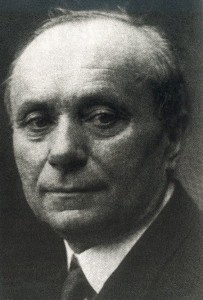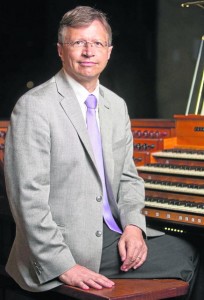While the 200 years between François Couperin and Charles Tournemire offered a substantial contribution to organ repertoire (with pieces of both great and dubious quality), after the French Classical suite, the next substantial collection of liturgical suites for organ is L’Orgue mystique of Charles Tournemire.
Charles Tournemire
 Charles Tournemire served as the organiste titulaire at the Basilique Ste-Clotilde in Paris and taught Chamber Music at the Paris Conservatoire. He has been described as a mystic with a deep faith in the Catholic Church. L’Orgue mystique is a series of 51 suites covering all the Sundays and major Feasts when it was permissible to use the organ. Most suites contain five movements as follows:
Charles Tournemire served as the organiste titulaire at the Basilique Ste-Clotilde in Paris and taught Chamber Music at the Paris Conservatoire. He has been described as a mystic with a deep faith in the Catholic Church. L’Orgue mystique is a series of 51 suites covering all the Sundays and major Feasts when it was permissible to use the organ. Most suites contain five movements as follows:
- Prélude à l’Introït
- Offertoire
- Élévation
- Communion
- Pièce terminale
While the French Classical movements were named by their registration, Tournemire identifies each movement only with its location in the liturgy. Virtually every movement references at least one Gregorian chant that was sung if not immediately before or after the organ piece at some other point during the celebration of the day. These chants were probably known by many organists of Tournemire’s time, but as he does not identify the chants in the composition, we are dependent upon researchers like Robert Sutherland Lord who have spent time identifying the chants included in each movement. Many can be found easily, but changes in liturgical books over the years have made some harder to identify than others.
Teaching Models
Just as the Orgelbüchlein and some other collections of J.S. Bach were written for teaching purposes, I believe Tournemire’s L’orgue mystique also had a teaching application. This collection is a catalog of compositional ideas and demonstration manual for improvisation in the Mass. Though still under copyright in the US, the collection is in the public domain in Canada, the EU, and in those countries where the copyright term is life+70 years or less, and thus may be found on IMSLP. Because I had an employee discount while working at a music store when I was a student and had plenty of cash to build my music library (and well before a resource like IMSLP had even been dreamed of), I actually purchased hard copies of almost every volume of the series. (I have two copies of one volume and am missing another because I tried to order the one I was missing but mistakenly ordered the wrong one.) I encourage you to purchase (or download where legal) several of the volumes so that you may study the way Tournemire treats chant. Over the next few weeks, I plan to take different movements from the suites as models for improvisations and suggest ways that we can build new pieces following what Tournemire has shown us.
For a head start on Tournemire’s style, beyond actually studying the scores, I will point you to a handout that David McCarthy prepared on the Five Improvisations of Tournemire available at http://davidmccarthymusic.com/technique.htm. David identifies lots of keyboard figuration which will be helpful to know as we seek to model Tournemire’s style.
Thank you
This newsletter marks number 50 that I have written, so I want to thank all of you who have subscribed, continue to read and share your feedback with me. I started this website and newsletter to try and accumulate the seemingly few resources on improvisation into one location. Thanks to help from readers like David, my own knowledge continues to grow, and I have located many other resources to share with you. I look forward to finding, creating, and sharing more resources with you in the future so that you too may continue to become better improvisers.
Hoping your improvisation skills are improving,
Glenn
Newsletter Issue 50 – 2015 09 28
See the complete list of past newsletter issues here.
Sign up to receive future issues using the box to the right on this page.



